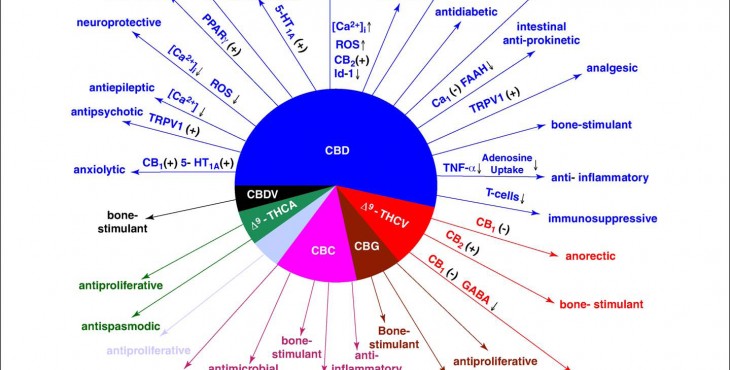Marijuana is known for producing chemicals called cannabinoids. Cannabis was the first plant known to create these chemicals, and gave its name to the endogenous cannabinoid system. The high that smokers feel is completely due to THC and other cannabinoids binding to the CB1 and CB2 receptors in the brain and throughout the body. The psychoactive elements of the high are due to the binding of THC to the CB1 receptor in the brain.
The list of places in the body where CB1 receptors are found in the human body is surprisingly long. Predominantly these receptors are found on cells in the central and peripheral nervous system, but are extremely wide spread. In the brain they are found in the hippocampus, basal ganglia, thalamus, hypothalamus, cerebellum, neocortex, pituitary gland, thyroid gland and the adrenal gland. As one can see there is widespread interaction in the brain, meaning the high is rather complicated and created by a range of subtle effects.Outside of the brain there is even more diversity and are found in the: spine, fat cells, muscle cells, liver cells, the endothelium of the liver, Kupffer cells of the liver, stellate cells of the liver, in the digestive tract, lungs, kidney, leydig cells, sperm, ovaries, oviduct, myometrium, decidua, and placenta. While the list might be exhausting, there is no better way to prove the importance of the endocannabinoid system for our general health.
The entire medical marijuana system is predicated on the way that the marijuana plant interacts with our bodies. The CB1 receptor exists on two essential cell types: those that produce GABA and those that produce glutamate, respectively called GABAergic and glutaminergic cells for their production of these neurotransmitters. These cells are found dispersed throughout the body, which explains why CB1 receptors are so widespread as well.
Given that glutamate is the most prominent neurotransmitter in the human body, it is easy to see how widespread the effects are. Thus marijuana decreases neuron communication, which accounts for some of the psychological effects. However, inhibiting glutamate is not just about getting stoned. Chronic diseases like ischemic stroke, epilepsy, lateral sclerosis, Alzheimer’s disease, Huntington disease and Parkinson’s disease have been linked to Exitotoxicity, a condition characterized by excessive glutamate levels. Green House Seed Co. plants can help prevent and control all of these diseases since the high THC content reduces glutamate concentrations.









